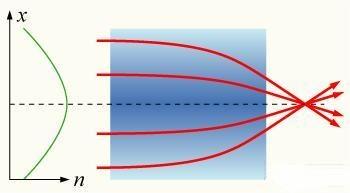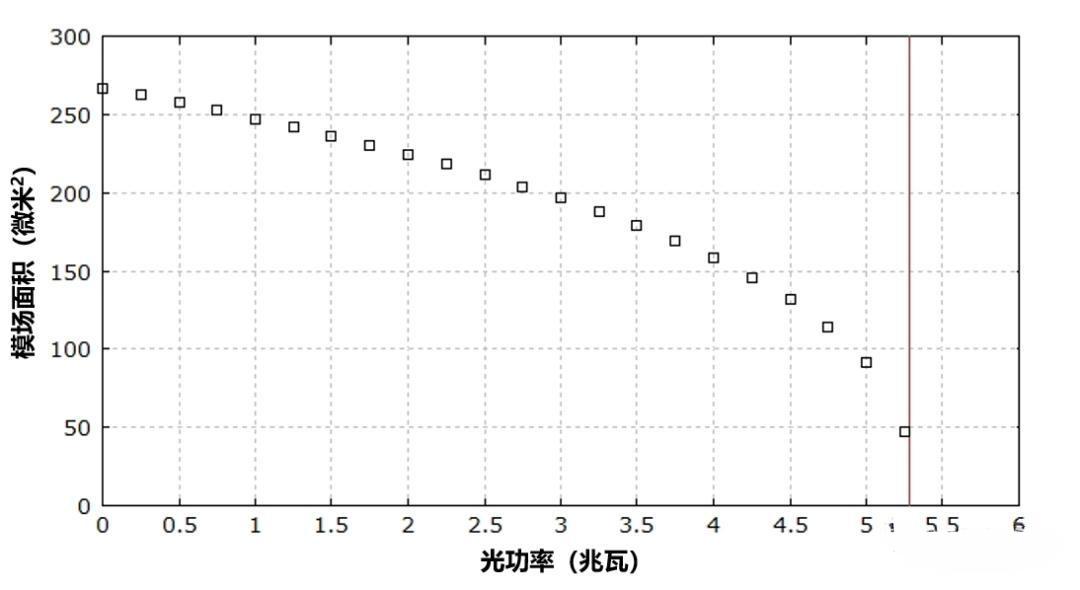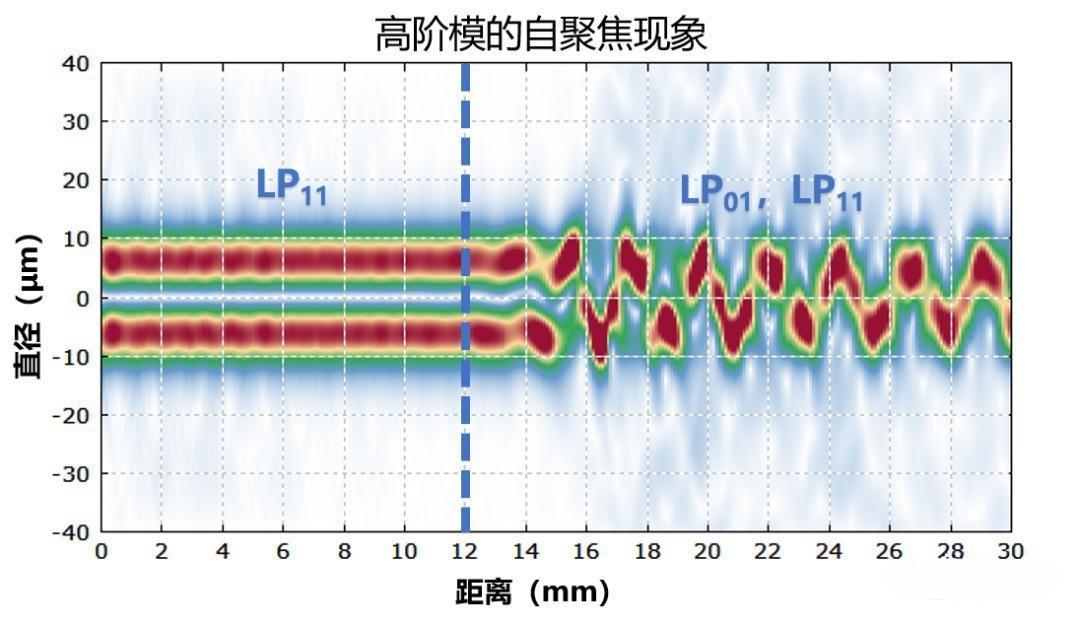Self-focusing and other self-acting phenomena have been studied for decades, and many potential applications are emerging: for the design of optical power limiters and optical switches; femtosecond self-focusing observes collimated, coherent white continuous light passing through an atmosphere of over 100 kilometers, enabling potential applications of remote sensing. However, the self-focusing effect also limits the transmission power of the optical medium; reduces the threshold of nonlinear optical process; and even causes optical material damage, which is the limiting factor in the design of high-power laser system. The self-focusing phenomenon is a nonlinear optical process caused by the refractive index change of a solid, gas, and liquid media exposed to strong electromagnetic radiation. Its refractive index will change accordingly with the light intensity. When the intensity of the beam is Gaussian in the cross section, and the intensity is strong enough to produce a nonlinear effect, the lateral refractive index of the material will also show a bell shape. This change in refractive index allows the material to act like a converging lens. This effect continues until the beam reaches a thin filament limit. The physical mechanism of this phenomenon is mainly based on the nonlinear Kerr effect, and the nonlinear Kerr effect with positive χ (3) makes the light intensity on the optical axis strong, resulting in a high refractive index in the middle of the beam, resulting in the focusing effect.


If n2> 0: self-focusing if n2 <0: self-defocusing where n0 is the linear refractive index, n2 is the optical constant characterizing the optical nonlinear intensity, and I is the Gaussian intensity. A self-focusing phenomenon may occur if a beam with an uneven transverse intensity distribution (e. g., a Gaussian profile) travels through a material with a positive n2. Optical wave field aggregation in nonlinear media whose refractive index n depends on the field strength. If a strong beam passes through a medium with this nonlinearity, the refractive index n of the medium increases with the electroscaling or heating electron polarization of matter due to the high frequency Kerr effect (Kerr). Increasing n causes nonlinear refraction in the medium: light deflect in the direction of larger field strengths. When the power of the beam exceeds a certain threshold, the nonlinear refraction suppresses the diffraction broadening of the beam, thereby reducing or completely eliminating the beam divergence, and focal points appear in the medium.

As power increases, the number of foci also increases, and the focus moves at speeds close to the speed of light. In the self-focusing of the light, the field focusing is much stronger than in the ordinary focusing passing through the lens. Self-focusing of light can lead to electrical breakdown, for example by the scattering of the laser. Under some conditions, the number of foci may become so large that light will propagate in an oscillatory electric waveguide that the beam itself forms in a nonlinear medium. For beams of a specific cross section with critical power, the cross section remains constant. Through this waveguide, the light energy can be transmitted over long distances.This phenomenon is also present in a moving medium, such as in the convective or scanning beam of a liquid and gas, where the beam deflects from its initial direction. The deflection angle depends on the beam power and the transverse velocity of the medium.
The inverse phenomenon is called defocus. This effect occurs in media where the refractive index decreases with increasing intensity. Thermal defocusing is relatively common due to a reduced refractive index due to the expansion of matter when heated by light. We have observed self-focusing and defocusing. The consequences of self-focusing: As the decrease of the beam radius further increases the intensity of the Kerr lens, it may lead to the complete collapse of the beam: as the beam radius decreases, the optical intensity gradually increases, thus further improving the self-focusing effect. This mechanism would result in a higher optical strength, which can easily destroy the optical medium. When the optical power is higher than the critical power, it is out of control. Self-focusing effect limits the transmission power of optical medium; reduces the threshold of nonlinear optical process; and even causes optical material damage, which is the limiting factor in the design of high-power laser system. The role of the critical energy for self-focusing: the critical power does not depend on the original beam area. If a larger diameter beam produces a weaker Kerr lens phenomenon, but it is also more sensitive to the lens. The initially larger beam requires a longer propagation distance (given light focus) until it disappears. We focus on the silica fiber, and the self-focusing limit of the peak power is about 4 MW (1 μ m wavelength).

Self-focused optical fiber is a slender medium that can guide the propagation of light waves in. The structure and refractive index design of optical fiber form its own waveguide. Under general power, optical fiber can perfectly transmit signal or energy from one end to the other; when the energy is relatively high and the core diameter is relatively small, the phenomenon of self-focused may occur. Self-focusing will reduce the original effective mode diameter. Whether there is a critical power for reaching the self-focusing. We examine the critical power of the quartz glass. One of the most mature optical fiber optic materials of quartz glass, the nonlinear index is assumed to be 2.210-20 m2 / W. The numerical calculation of the relationship between the mode field area and the optical power is like this graph representation, and the red line is the critical power point, reaching 5MW.

If the incident power is well above the critical threshold of self-focusing, a plasma channel may occur with self-focusing. The light pulse can maintain an almost constant diameter transmission for a long distance. This is the dynamic balance between the self-focus and the plasmonic defocus effect. Where the beam decomposes into several beams with small light intensity. The resulting beam direction can be random, though often with a fairly regular structure. This phenomenon has certain application value in remote sensing, remote detection of air pollutants, laser lightning induction, pulse compression, lightning control, and artificial rain and snow and other fields.
